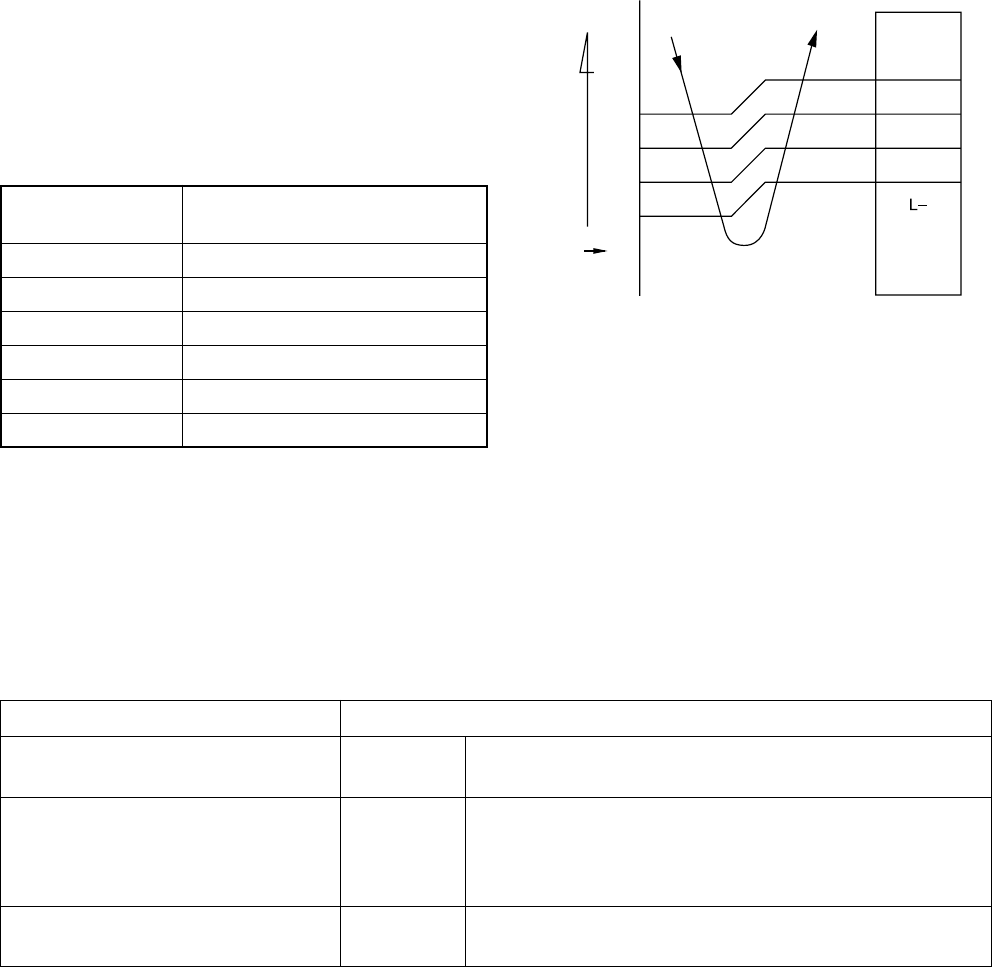
– 22 –
8. OPERATION DESCRIPTION
8-3. Air volume control
(1) Operation with [HIGH (H)], [MED (M)], [LOW (L)],
or [AUTO] mode is performed by the command
from the remote control.
(2) When [FAN] button is set to AUTO, the indoor fan
motor operates as shown in Fig. 8-3-1, Fig. 8-3-2
and Table 8-3-1.
<COOL>
NOTE :
*1: The values marked with *1 are calculated and
controlled by the difference in motor speed
between M+ and L–.
Fig. 8-3-1
8-1. When power supply is reset
(1) Distinction of outdoor units
When the power supply is reset, the outdoors are
distinguished, and control is exchanged according
to the distinguished result.
(2) Setting of the indoor fan speed
Based on EEPROM data, rspeed of the indoor fan
is selected.
Remarks: Air speed
8-2. Operation mode selection
(1) Based on the operation mode selecting command
from the remote control, the operation mode is
selected.
Table 8-2-1
(2) Automatic Operation
• The air conditioner selects and operates in one
of the operating modes of cooling, heating or
fan only, depending on the room temperature.
• If the AUTO mode is uncomfortable, you can
select the desired conditions manually.
Remote control
Outline of control
command
STOP Air conditioner stops.
FAN Fan operation
COOL Cooling operation
DRY Dry operation
HEAT Heating operation
AUTO Automatic operation
*1
*1
*1
+3
+2.5
+2
+1.5
+1
+0.5
−0.5
0
M+
Preset
temp.
°C
(Room temp.) − (Preset temp.)
Room temperature in operation Operating condition
The set temperature +1°C or higher
(in case that the room is hot)
The set temperature –1°C to +1°C
The set temperature –1°C or lower
(in case that the room is cold)
Performs the cooling operation at a temperature 1°C
higher than the setting.
Performs the fan only operation (low speed) while
monitoring the room temperature. When the room
temperature changes, the air conditioner will select the
cooling or heating mode.
Performs the heating operation at a temperature 1°C
lower than the setting.
Cooling
operation
Fan only
operation
Heating
operation
Table 8-2-2


















